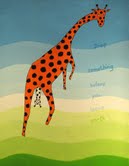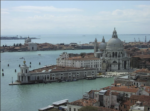Bertold Stallmach – Giraffe Superbrain

La galleria Jerome Zodo Contemporary è lieta di presentare Giraffe Superbrain, la prima personale italiana del giovane artista Bertold Stallmach, nato nel 1984 a Quithing nel Regno di Lesotho, in Sud Africa, ma emigrato a Zurigo, in Svizzera, dove oggi vive e lavora.
Comunicato stampa
La galleria Jerome Zodo Contemporary è lieta di presentare Giraffe Superbrain, la prima personale italiana del giovane artista Bertold Stallmach, nato nel 1984 a Quithing nel Regno di Lesotho, in Sud Africa, ma emigrato a Zurigo, in Svizzera, dove oggi vive e lavora.
La mostra Giraffe Superbrain inaugurerà giovedì 9 giugno 2011, a partire dalle 18.00 presso lo spazio di via Lambro 7, a Milano, fino al 10 settembre 2011, da lunedì a venerdì, dalle 10.00 alle 19.00.
Vincitore di diversi premi e borse di studio, dalla Swiss Art Award di Basilea, all'Advancement Award della ZhdK, la Kanton Zurich e la Ernst-Goehner Foundation di Zurigo, Bertold Stallmach torna a Milano a distanza di poco più di un anno dalla sua partecipazione ad (ex)communicate, mostra collettiva con cui la galleria Jerome Zodo Contemporary inaugurò lo scorso 21 gennaio 2010.
L'ingegno di questo giovane artista svizzero porta a concepire un programma ed un linguaggio estetico complesso, un tessuto multiforme ed elaborato, poetico, innocente, tortuoso ed inaspettato. Lontani da forme prestabilite ed usuali, i suoi ibridi, pitture, audiovisivi, installazioni e più spesso assemblaggi meccanici, agiscono in una metodologia che tende a recuperare e far recuperare allo spettatore, consapevolezza ed orgoglio nel procedimento artistico.
Per il nuovo progetto milanese Bertold Stallmach si confronta direttamente con il proprio pubblico, Giraffe Superbrain interroga la percezione ed il ruolo del visitatore, le opere assumono l'equivalente del sistema analitico adottato dall'artista per formulare la sua idea di corretta fruizione dell'opera d'arte. L'attività che lo spettatore gioca nel meccanismo di formazione del sapere culturale, viene scomposta e descritta in tutte le funzioni noetiche e connettive. L'artista traduce l'intento, creando un ricco percorso espositivo, lungo il quale ci invita all’incontro e alla partecipazione diretta delle opere.
Per Bertold Stallmach l'Arte serve all'Arte, e l'Arte si spiega solo con l'Arte. Quante forme ne esistono? Per lui, due. Due sono i possibili caratteri topografici che la distinguono, quella alta è elitaria, perché rivolta ai più fortunati, i colti; quella popolare è di bassa estrazione, quindi comprensibile a tutti, perché legata agli istinti e le emozioni umane. L'altezza e la bassezza sono i vettori della forza artistica, ma se è vero che la divina musa informa e coltiva lo spirito dell'uomo, che tipo di cultura si formerà a ridosso dei piani bassi o sulle cuspidi di quelli alti? Il percorso espositivo, in particolare la grande installazione posta sull'ampia parete che corre lungo la galleria, è suddivisa secondo questa classificazione, parte alta e parte bassa. Ciò spiega il perché del titolo Giraffe Superbrain e la presenza di Riksha, un veicolo a pedali con forma e sembianze di giraffa su cui il visitatore è chiamato a salire per girare nello spazio della galleria ed osservare le opere.
Attraverso una fotocamera posta sul muso dell'animale ed un computer di bordo, il pubblico comprende i pensieri ed i significati celati nei lavori. Riksha la giraffa, è come uno di noi, è uno spettatore - tramite l'esperienza e la conoscenza acquisita, decifra ed indirizza il senso di una particolare opera d'arte. Dall'ingresso della galleria, nell'area di sinistra è presente su di un apparato in legno, la biografia essenziale di Riksha, composta da nove bande bianche e nere, ciascuna delle quali racconta un episodio della sua vita, una per ogni luogo in cui è vissuto. L'opera ricostruisce la formazione delle capacità cognitive di un individuo istruite dall'esperienza e dalla memoria soggettiva quanto dal ricordo e la conoscenza degli altri. Al centro di questa area e in fronte alla ricostruzione biografica di Riksha, è inserita l'opera scultorea dal titolo Future of Rikshaman (2011, plexiglass, lamp, motor, vodka and newspaper, 100 x 60 x 110 cm), il lavoro presenta la possibile proiezione futura della vita del personaggio andando inoltre, a sottolineare le deboli peculiarità del suo carattere.
Una forma ulteriore di classificazione del fenomeno arte è il suo godimento. La domanda ora è perché ci piace l'Arte? Cosa suscita? Sempre nell'ampia parete Bertold Stallmach, servendosi di diverse argomentazioni illustrative, disegni, pitture su tela, oggetti, pupazzetti, fotografie e video, prova a suggerire cinque categorie estetiche.
1. ISPIRAZIONE. Mi piace perché quando la guardo mi fa venire in mente una buona idea.
2. SCOPERTA DI SE'. Mi piace perché esprime qualcosa che ho sempre sentito ma che non mi ero mai reso conto di pensare, ed ora vedo i miei pensieri e di miei sentimenti più chiaramente.
3. PURO FASCINO. Mi piace e non so perché. Il che la rende anche migliore.
4. FORTE IMPATTO. Mi piace perché mi ha cambiato la vita.
5. Mi piace perché quando guardo un'opera d'arte posso conoscere una parte dell'artista.
A concludere il progetto espositivo è il corredo di disegni Concept Drawings, posti nella parete divisoria dello spazio espositivo. Come piccole didascalie, mostrano lo sviluppo ed il processo creativo che hanno portato l'ideazione di Giraffe Superbrain.
Per dar prova e verifica alla tesi della corretta fruizione dell'opera d'arte, l'artista fa appello al concorso Concept-mistake-finder-station; un gioco che permette al pubblico di identificare e di ricostruire le parti errate presenti in mostra. Attivando ancora una pressione nello spettatore, Bertold Stallmach invita alla partecipazione diretta della mostra, dimostrando che l'esperienza didattica si fa necessaria alla comprensione dell'opera d'arte.
La Svizzera rimane principalmente la sede in cui Bertold Stallmach vive e lavora. Laureatosi presso L’Università di Belle Arti di Zurigo nel 2008; dopo un’esperienza alla Future University di Hakodate, in Giappone, nel 2007, raccoglie vari riconoscimenti artistici: nel 2008 la borsa di studio della Migros Culture Percentage per post-produzione audiovisiva; il premio dell’IKEA Foundation e del Schweizerische Studienstiftung; nel 2010 il Financial project support for artists of the Kanton Zurich e il Financial project support by the Ernst-Goehner Foundation. Ha partecipato a diverse manifestazioni artistiche svizzere, al Swiss Art Awards, a Basilea (2009 e 2010); al Dienst gebäude e al Güterbahhof di Zurigo (2008 – 2009); al Go West – Festival der Künste, di Zurigo (2006) e al museo Kunsthalle di Zurigo con la mostra collettiva Bekanntmachungen – der Strich (2005). Del 2010 è la sua prima mostra personale alla Susanna Kulli Galerie di Zurigo; tra le mostre collettive nel 2010 ricordiamo Catch of the year 2, Dienstgebaude (Zurigo) e Kantonale Werkshau, F + F Schule fur Kunst (Zurigo).
Jerome Zodo Contemporary is pleased to present Giraffe Superbrain, the first solo show in Italy by the young artist Bertold Stallmach, who was born in Quithing, Lesotho (Southern Africa) in 1984, but emigrated to Switzerland and is now based in Zurich.
The exhibition Giraffe Superbrain will open on Thursday, June 9, 2011, at 6pm in the gallery space at Via Lambro 7, Milan, through September 10, 2011, Monday to Friday, 10am - 7pm.
The winner of prizes and grants from institutions such as the Swiss Art Awards in Basel, the Advancement Award of the ZhdK, the Canton of Zurich, and the Ernst-Goehner Foundation of Zurich, Bertold Stallmach is returning to Milan just a little over a year after his participation in (ex)communicate, the group show that inaugurated the Jerome Zodo Contemporary gallery on January 21, 2010.
The inventiveness of this young Swiss artist has led him to dream up a complex aesthetic language and program, a multiform, elaborate fabric that is poetic, innocent, involute and unexpected. Departing from all pre-established, ordinary forms, his hybrid pieces—paintings, audiovisual pieces, installations, or more often, mechanical assemblages—work within a methodology aimed at recovering, and helping the viewer recover, awareness and pride about the artistic process.
For his new project in Milan, Bertold Stallmach addresses his audience directly. Giraffe Superbrain challenges the visitor’s perception and role, the works embodying the analytic system that the artist adopts to formulate his concept of how artwork should be enjoyed. The part played by the viewer in the mechanism of forming cultural knowledge is deconstructed and described in all its noetic and connective functions. The artist translates this intent into a complex exhibition, a path along which visitors are invited to encounter and directly interact with the works.
In Bertold Stallmach’s opinion, Art serves Art, and Art can be explained only through Art. How many forms does it take? As he sees it, two. There are two possible topographic qualities it can assume: “high” and elitist, aimed at the most fortunate, or “low” and popular, comprehensible to all, since it is linked to human instincts and emotions. High and low are the vectors of artistic power, but if it is true that the divine muse molds and cultivates the human spirit, what kind of culture is formed on the lower plains or the upper peaks? The exhibition, particularly the large installation placed on the long wall that runs through the gallery, is divided according to this classification into a higher section and a lower one. This explains the title Giraffe Superbrain and the presence of Riksha, a giraffe-shaped, pedalled vehicle that the visitor is asked to ride through the gallery to look at the works.
A camera placed on the animal's nose and an onboard computer reveal the ideas and meanings hidden in the works. Riksha the giraffe is like one of us, a viewer—through experience and acquired knowledge, it deciphers and directs the meaning of a given artwork. In the area to the left of the gallery entrance is a wooden structure presenting Riksha’s basic biography, it is divided into nine black and white stripes, each of one is representing an episode of Rikshaman’s life, one for every place he lived. The work reconstructs the formation of an individual’s cognitive capacities, which are informed by both subjective experience and memory and by the memories and knowledge of others. At the center of this area, in front of the biographical reconstruction, is the sculptural piece titled Future of Rikshaman (2011, plexiglas, lamp, motor, vodka and newspaper, 100 x 60 x 110 cm), which presents a possible future projection of the character’s life, underscoring the quirks of its character.
Another method of classifying the phenomenon of art is according to the way that we enjoy it. Here the question is: why do we like Art? What does it inspire in us? Back on the long wall, Stallmach uses various forms of illustration, drawings, paintings on canvas, objects, stuffed animals, photographs and videos, to suggest five aesthetic categories.
1. INSPIRATION: I like it because when I look at it gives me good ideas.
2. SELF-DISCOVERY: I like it because it expresses something I’ve always felt, but never realized I did, and now I see my thoughts and feelings more clearly.
3. PURE FASCINATION: I like it and I don’t know why. Which makes it even better.
4. STRONG IMPACT: I like it because it’s changed my life.
5. I like it because when I look at a work of art it tells me something about the artist.
Concluding the exhibition is the series of Concept Drawings, placed on the dividing wall of the exhibition space. Like a storyboard, it shows the creative development process that led to the conception of Giraffe Superbrain.
To test and prove his thesis about how artwork should be enjoyed, the artist relies on the Concept-mistake-finder-station: a game that lets visitors identify and reconstruct the mistakes in the exhibition. Once again putting a certain pressure on his viewers, Bertold Stallmach invites them to directly participate in the exhibition, showing that the didactic experience is necessary to understand the artwork.
Bertold Stallmach is primarily based in Switzerland. He graduated from the Zurich University of the Arts (ZHdK) in 2008, after studying for one term at Future University in Hakodate, Japan in 2007, and has received awards such as the Migros Culture Percentage grant in 2008 for audiovisual post-production, an IKEA Foundation grant, and a Swiss Study Foundation scholarship. In 2010, he received project grants from the Canton of Zurich and the Ernst-Goehner Foundation. He has taken part in many artistic events in Switzerland: at the Swiss Art Awards in Basel (2009 and 2010); at the Dienstgebäude and Güterbahhof in Zurich (2008 – 2009); at the Go West – Festival der Künste, in Zurich (2006) and at Kunsthalle Zurich with the group show Bekanntmachungen – der Strich (2005). His first solo show was in 2010 at Susanna Kulli Galerie in Zurich; his group shows in 2010 included Catch of the year 2, Dienstgebäude (Zurich) and Kantonale Werkshau, F + F Schule fur Kunst (Zurich).



